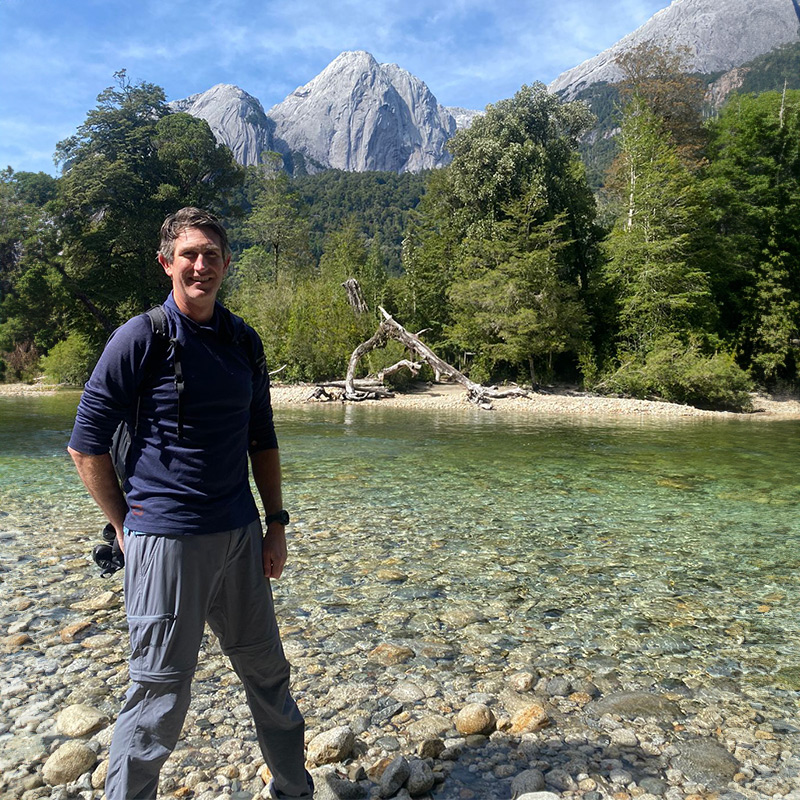Friends,
It’s Jesse, back again as our travels through Northern Patagonia continue. The layers of experiences we’ve shared, from engaging with the local lake communities to the wonderful and hospitable Chilean people, have been nothing short of amazing. Navigating these landscapes and lake conservation challenges alongside Chile Lagos Limpios and our group of Lake Champions from the States has made this a trip I won’t forget.
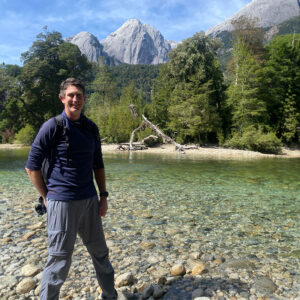 Day four took us just north of Pucón for a float down the Río Pucón O Minetue. Our boats wound through a gentle section of the waterway, where the native and invasive trees crowded the banks in between farms of different types. We saw people fishing and hanging out at the beach. If we squinted hard enough, we could have been on a mellow section of the Truckee River.
Day four took us just north of Pucón for a float down the Río Pucón O Minetue. Our boats wound through a gentle section of the waterway, where the native and invasive trees crowded the banks in between farms of different types. We saw people fishing and hanging out at the beach. If we squinted hard enough, we could have been on a mellow section of the Truckee River.
Rafting is a popular activity among tourists, and we were fortunate to hear more about the overlap between the economy and environment of the region from Willy, the man who has owned a rafting guide company for the past forty years.
Over a traditional Chilean barbecue hosted at Willy’s home, with volcanoes in the distance, our group talked about what we’d seen in our time here, and especially how Chile’s challenges are similar – and different – to Tahoe’s. Every member of our group has a very different expertise and perspective. Now that we’re several days into the trip, the personalities are jelling and conversations are flowing freely. There are lots of ideas pinging back and forth, like how a conservation experience from Tahoe can be applied here in Chile, and vice versa.
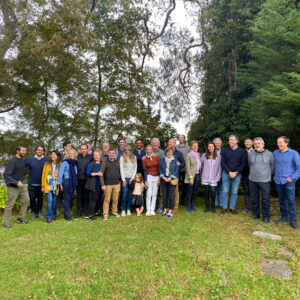
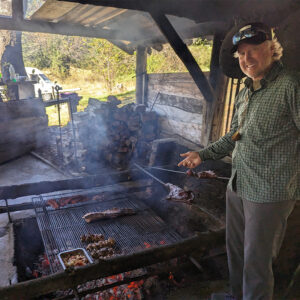

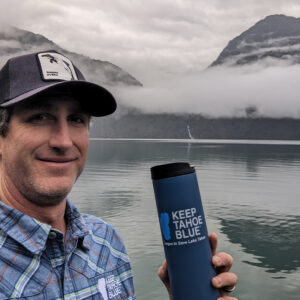
On Day Five, we left Pucón and the shores of Lake Villarrica headed for Lake Llanquihue, the Lake most like Tahoe of the 23 lakes cared for by Chile Lagos Limpios. We purposely selected the long way to visit several other lakes, including Lake Calafquén, Lake Panguipulli and Lake Riñihue. As we made our way south toward Patagonia proper, the scenic drive through the heart of Chile’s lake district offered a chance to appreciate all that’s at stake.
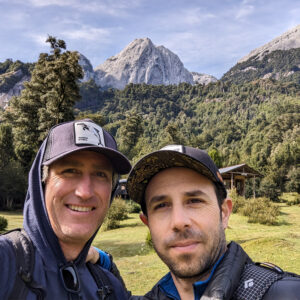 Along the way, we made a stop at Lake Riñihue, a serene and less developed lake, starkly contrasted with Lake Villarrica’s bustling shores. There, we took a 45-minute tour by boat. We observed areas where native vegetation had been cleared, and a few ranches were being converted into housing subdivisions. Each of these 23 lakes has its own pressures and requires its own tailored conservation approach to balance community, economic and environmental priorities.
Along the way, we made a stop at Lake Riñihue, a serene and less developed lake, starkly contrasted with Lake Villarrica’s bustling shores. There, we took a 45-minute tour by boat. We observed areas where native vegetation had been cleared, and a few ranches were being converted into housing subdivisions. Each of these 23 lakes has its own pressures and requires its own tailored conservation approach to balance community, economic and environmental priorities.
Lake Llanquihue waited for us at the end of our trip. Its similarities to Lake Tahoe were not lost on any of us. Here lies the heart of our collaboration, a lake where scientific monitoring and community engagement efforts have begun to take shape. The roadmap for sustainable development around Lake Llanquihue, spearheaded by Chile Lagos Limpios, lays the groundwork for a sustainable, productive future.
This trip has been more than an exchange in so many ways. The collaborative progress being made to preserve Lake Llanquihue could be a blueprint for a global community of lake guardians to work together.
There are many parallels between Lake Tahoe and the Patagonian lakes – both good and bad. And there are certainly more lakes around the world that are both treasured and challenged, with dedicated groups of people working to preserve them for the future. I think this trip will lead to lessons we can share with lakes on other continents and bring home to Tahoe. I look forward to sharing them with you soon.
Cheers,
Jesse


